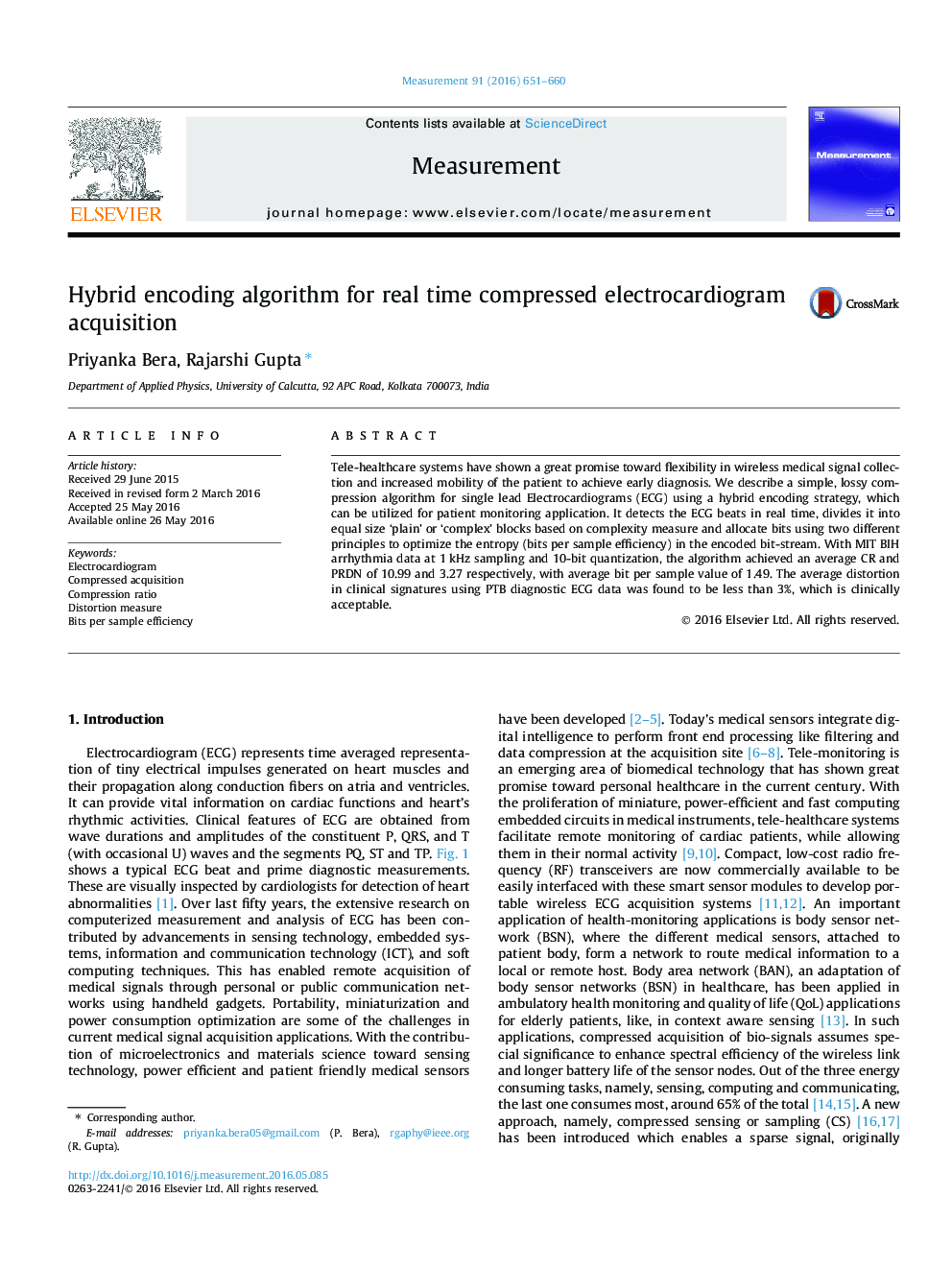| Article ID | Journal | Published Year | Pages | File Type |
|---|---|---|---|---|
| 729713 | Measurement | 2016 | 10 Pages |
•Bit allocation based on zonal complexity in segmented ECG beats.•Average CR of 10.99 and PRDN of 3.27 over all mitdb data.•Average entropy of 1.49 bits/sample for mitdb data with enhanced link throughput.•Comparable results with some wavelet and compressed sensing techniques.•Low complexity, hence implementable with low end processor.
Tele-healthcare systems have shown a great promise toward flexibility in wireless medical signal collection and increased mobility of the patient to achieve early diagnosis. We describe a simple, lossy compression algorithm for single lead Electrocardiograms (ECG) using a hybrid encoding strategy, which can be utilized for patient monitoring application. It detects the ECG beats in real time, divides it into equal size ‘plain’ or ‘complex’ blocks based on complexity measure and allocate bits using two different principles to optimize the entropy (bits per sample efficiency) in the encoded bit-stream. With MIT BIH arrhythmia data at 1 kHz sampling and 10-bit quantization, the algorithm achieved an average CR and PRDN of 10.99 and 3.27 respectively, with average bit per sample value of 1.49. The average distortion in clinical signatures using PTB diagnostic ECG data was found to be less than 3%, which is clinically acceptable.
